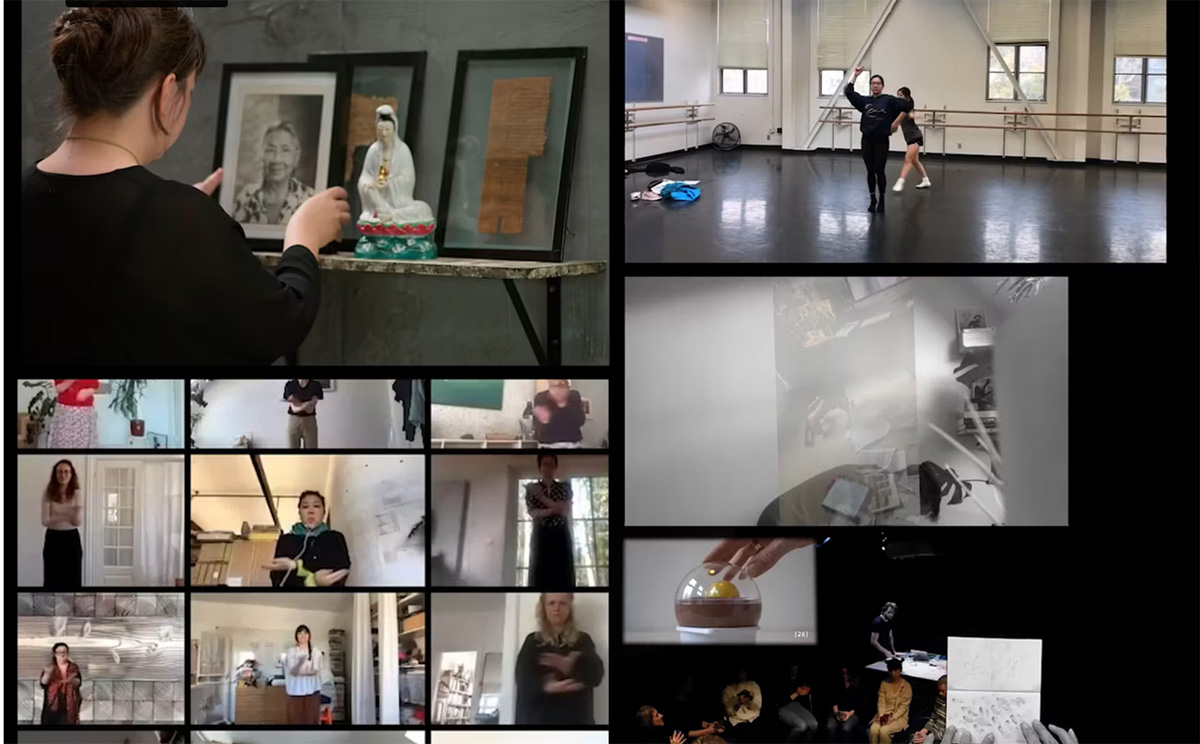VIDEO ARTICLE TRANSCRIPT
[Note: This is a transcript of a video article. Onscreen text appears left justified, while spoken words are indented. Individual elements from the transcript, such as metadata and reference lists, may appear more than once in the document, in order to be properly read and accessed by automated systems. The transcript can be used as a placeholder or reference when it is not possible to embed the actual video, which can be found by following the DOI.]
[0:10]
We are living through a moment of radical transformation in the audiovisual.
The Lab Book (2021 [1929]), Darren Werschler et al. University of Minnesota Press.
Figure 34. “Imitative Teleplasm, Miniature Face.” Annotated photograph from the séance of September 22, 1929. A likeness of W. E. Gladstone is apparent in the ectoplasmic apparition. University of Manitoba Archives and Special Collection — Hamilton Family fond.
Le voyage dans le lune (1902), dir. Georges Méliès.
We are living through a moment of radical transformation in the audiovisual.
Since the beginning of photography, the forging of images has been explored alongside their documentary capacities. For every argument and testimony based on photographic evidence, there was a creative and fictional experiment. Audiovisual recording is always audiovisual creation.
Reveal Body Worn Camera Solutions (2018), “The future of BODY worn VIDEO.” YouTube.
The ubiquity of cameras is a defining feature of the present age. Cameras are seemingly everywhere today, in our pockets, in the sky, and yet we are coming no closer to a shared sense of truth or community. Body-worn cameras on police are supposed to prevent excessive violence. But we know that they also capture and make that ongoing violence shareable on a massive, global scale.
Guli Silberstein (2022), “Life is a Dream of Time.” makersplace.
An image or a sound cannot prove an event. Neither can written words. But these vitual and material documents are unavoidable media for the transmission of social trust and social power. The work of critical embodied research directly explores such matters of trust, power, and medium.
[1:46]
The video articles in this issue of Journal of Embodied Research explore such matters and relations in careful and sensitive ways. They invite us to pause before rushing into the audiovisual maelstrom of social media feeds and digitally generated images.
What might be the transformative power of slower approaches to audiovisuality, grounded in sustained practices of reading and touching, knowing and becoming?
What might be the transformative power of slower approaches to audiovisuality, grounded in sustained practices of reading and touching, knowing and becoming?
Karen Pearlman, Tom Murray, Stephanie Russo, Hsu-Ming Teo, Rowan Tulloch, Rachel Yuen-Collingridge, and Malcolm Choat, “Peribiophoty.”
In “Peribiophoty,” Karen Pearlman and Tom Murray work with five colleagues to stage nuanced, affective, material investigations that link personal and social histories in unexpected ways. Weaving together history and literature, childhood experiences and video games, fact and forgery, this carefully composed and structured video article offers rich insights about the ongoing presence of the past.
Teresa Heiland, Mandi Taylor, Marlene Jensen, and Stephanie Morikawa, “Dancing Calgon: Embodied Research through Motif Notation.”
In “Dancing Calgon,” Teresa Heiland and Mandi Taylor work with dancers Marlene Jensen and Stephanie Morikawa to re-perform a danced duet from 1996. The process of translating a video recording of concert dance into a living choreographic score passes through a rigorous set of qualitative research methods, including dance notation, which is foregrounded as a way of understanding and articulating the nuances of choreographic knowledge.
Kieran Sheehan, “Constantly Becoming With.”
In “Constantly Becoming With,” Keiran Sheehan invites us into a poetic journey through improvised movement developed in response to professionals in the “helping” industries. The challenging form of this video essay enacts its own content, refusing to separate out method from content or fact from fiction and taking full advantage of the audiovisual medium to draw out the worldmaking capacities of moving and becoming.
Louise Ravnløkke, Louise Permiin, and Anna-Mamusu Sesay Wehlitz, “Bodily ways of knowing in fashion: Connectedness between clothing and the body.”
In “Bodily Ways of Knowing in Fashion,” Louise Ravnløkke, Louise Permiin, and Anna-Mamusu Sesay Wehlitz describe an experiment that used an experimental choreographic process to dig into the material and corporeal details of our embodied relations to clothing. The video article focuses delightfully on what the authors call a relatively neutral, longstanding, and ubiquitous, yet understudied category of garment: the sock.
Marloeke van der Vlugt, Carey Jewitt, and Falk Hübner, “Thresholds of Touch.”
Finally, in “Thresholds of Touch,” Marloeke van der Vlugt and Carey Jewitt with Falk Hübner take us through the experience of participants in a performance exploring touch. This is the longest video article published so far by Journal of Embodied Research. Its duration follows the length of the performance it documents, while a layered approach to annotation and montage offers further context in ways that are only available through the videographic medium.
In these video articles, the authors offer striking alternatives to the traditional hierarchical relationships between camera, body, and self. Please enjoy these contributions to videographic embodied research.
Journal of Embodied Research 6.1 (2023).

